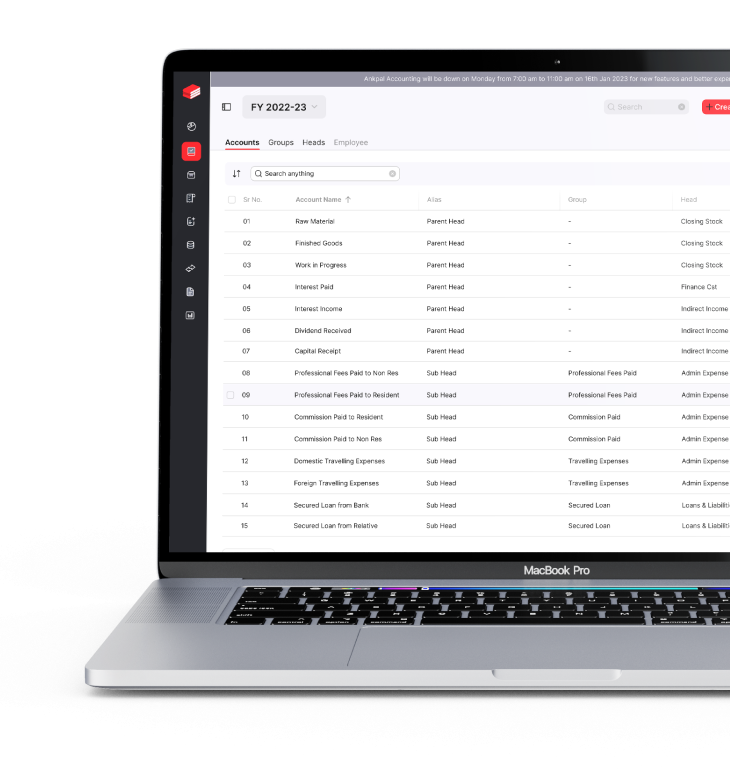
GST (Goods and Services Tax) compliance is important for small and medium businesses (SMEs) in India. Staying on top of GST filing and reports can be challenging, but with the right digital tools, it becomes easier and more efficient.
This blog will explain the basics of GST compliance and how digital tools help businesses manage GST better.
The Basics of GST Compliance
GST compliance means following all the rules and regulations of the Goods and Services Tax. Every business that falls under the GST category must file returns, pay taxes, and keep records of sales and purchases. Missing deadlines or filing incorrect details can lead to fines. So, businesses need to handle GST smoothly.
The Benefits of Using Digital Tools for GST Compliance
1. Accuracy
Digital tools make GST calculations and filing more accurate. Instead of doing everything manually, these tools automatically compute taxes based on sales and purchases. This reduces errors, ensuring that businesses don't overpay or underpay their taxes.
2. Time-Saving
Handling GST manually takes a lot of time. Digital tools speed up the process. They can calculate taxes, generate invoices, and even file returns quickly. Business owners can focus on growing their businesses rather than worrying about tax paperwork.
3. Cost-Efficiency
Digital tools help businesses save money in the long run. Hiring an accountant or tax consultant for every small thing can be expensive. Using GST software reduces this cost. Some tools even offer affordable plans for SMEs, making it a budget-friendly solution.
4. Real-Time Updates
With digital GST compliance tools, businesses get real-time updates on tax rules, deadlines, and filing statuses. Any changes in GST regulations are instantly reflected in the software, keeping businesses up to date without needing to track it manually.
5. Enhanced Transparency
Digital tools provide a clear and transparent view of your business’s tax data. You can easily see what taxes you owe, and what you have paid, and keep track of all filings. This reduces confusion and builds confidence in your business's financial management.
6. Digital Filing Systems, No Paperwork
Gone are the days of filing piles of papers for tax returns. GST compliance software allows businesses to file returns digitally with just a few clicks. It also stores all documents online, making it easier to access and manage whenever needed.
Key Features to Look for in GST Compliance Software
When selecting a tool for GST compliance, consider these important features:
User-Friendly Interface
The best GST filing software in India should be easy to use, even for those with little technical knowledge. A simple and intuitive interface ensures that business owners can navigate through the software without any confusion.
Integration
Look for software that integrates with your current SME accounting software. This helps in automatically importing data related to sales, purchases, and invoices. Seamless integration saves time and reduces errors.
GST Filing
A good GST compliance tool should offer easy filing of GST returns. It should support the filing of GSTR-1, GSTR-3B, and other required returns. The software should also help with E-Way Bill generation, which is important for transporting goods.
Data Security
Since GST compliance involves sensitive financial information, security is crucial. Choose software that offers high-level data encryption and secure backup. This will ensure that your tax data is safe from cyber threats or accidental loss.
The Key Digital Tools for GST Compliance
There are several digital tools available to help SMEs with GST compliance. Some of the best tools include:
1. GST Software
GST software automates tax calculations, invoice generation, and return filing. It also tracks sales and purchases, reducing the risk of mistakes in tax payments. Some of the best GST filing software in India includes features like auto-generated tax reports and reminders for deadlines.
2. E-Waybill Generation Tool
For businesses transporting goods, an E-Waybill is mandatory. Digital E-Waybill generation tools help in creating and managing E-Waybills with ease. These tools integrate with your sales data, making the process quicker and smoother.
3. GST Return Filing Tool
This tool is specifically designed to help businesses file their GST returns accurately. It generates the required forms, such as GSTR-1 and GSTR-3B, and ensures that all data is in place before submission. This reduces the risk of errors in return filing.
4. GST Compliance Dashboard
A GST compliance dashboard provides a clear overview of your tax data. You can see your filing status, upcoming deadlines, and tax liabilities all in one place. It helps business owners stay organized and avoid missing important deadlines.
Advanced Features of Leading GST Software
Some GST software like Ankpal offers advanced features, which help SMEs manage their taxes even better. Key features include:
Self-Service Support and Reduced Reliance on Consultants
With Ankpal, business owners can easily handle their GST filing without needing constant help from tax consultants. The software provides step-by-step guides, ensuring that even those with little tax knowledge can file their returns accurately.
Adaptation to Future Changes
GST regulations can change over time, and the right software like Ankpal automatically updates to reflect those changes. This ensures that businesses are always compliant with the latest rules, without any extra effort.
Conclusion
Digital tools for GST compliance are essential for small and medium businesses. They simplify the process, improve accuracy, save time, and reduce costs. By choosing the right GST software, businesses can ensure they meet all GST regulations easily. Look for features like user-friendly interfaces, integration with your accounting software, secure data handling, and real-time updates.








